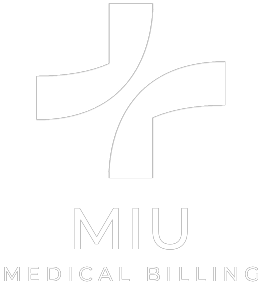Introduction:
Managing departments that deal with a hospital’s revenue cycle constitutes its core financial structure. It involves all the administrative and clinical processes contributing to generating, managing, and receiving revenue attributable to patient services. The importance of smooth and efficient hospital revenue cycle management lies in matters such as correct schedules of service billing, high-level of employed procedures, and the hospital’s financial performance. Optimizing this process has become more critical, especially in today’s environment of shifted healthcare paradigms. This paper looks at vital recommendations on how hospitals can improve their revenue cycle management and lessons on how to ease workflow, improve the patient experience, or increase the revenue collected per patient.
1. Streamlining Patient Registration and Eligibility Verification

Receiving patients’ registration marks the starting point of the hospital revenue cycle management process. Using an effective pre-registration process reduces the number of mistakes and enhances the revenue cycle. Healthcare facilities must acquire better registration tools that correctly identify patients’ insurance and demographic information. This is coupled with the need for real-time eligibility checks. This, in turn, reduces the likelihood of having claims denied, and hospitals should ensure that they obtain confirmation of insurance before rendering the services. This is a critical first step in hospital revenue cycle management since it creates the foundation for efficient billing and collecting on accounts receivable.
2. Embracing Technology for Improved Coding and Documentation
There we have it, another section of the hospital that is key in revenue management, and this can only be attributed to coding and documentation. Upgrading the clinical documentation improvement (CDI) programs and computer-assisted coding (CAC) system is beneficial and has been proven to increase accuracy. These technologies help write code faster, thus decreasing the chances of mistakes that lead to denials or underpayments. When applied to the hospital revenue cycle management, these tools can help healthcare institutions document all their services and code them properly while complying with the industry standards and increasing the likelihood of reimbursement.
3. Optimizing Claims Management and Submission
The claims management process forms the core of the hospital revenue cycle management. If the claims submission procedures are efficient, it is possible to radically enhance the cash gravitational field and minimize the time interval between service delivery and payment receipt. Some of the best practices involve submitting claims electronically, incorporating a claim editing tool to check mistakes before submitting the claims, and developing an excellent mechanism to monitor claims that have been submitted. Additionally, one of the critical aspects of the hospital revenue cycle is the constant tracking of the claim status and the follow-up on rejected or delayed claims. Focusing on this crucial area will enable hospitals to reduce their days in accounts receivable and, hence, post better results.
4. Enhancing Denial Management Strategies
Denial management is one key area of the hospital revenue cycle management that directly affects any hospital’s revenue stream. Proactive denial management necessitates a systematic approach to identifying potential denial patterns, the possible causes, and countermeasures to reverse a given process to avoid further denials. Some best practices of hospital revenue cycle management include the implementation of a specific denial management team, a way of using algorithms for the identification of potential denials, and the creation of an efficient appeals process. Hospitals need to know the importance of addressing denials and may achieve better reimbursement rates and recover losses in revenue.
5. Implementing Patient-Centric Billing Practices
John, it may interest you to learn that the concept of patient-centric billing plays a critical role in hospital revenue cycle management, given the current market-oriented society. Simplified price structure, well-understood billing statements, receipt for payment, and multiple modes of payment enhance patient satisfaction and increase the chances of payment. Some effective hospital revenue cycle management strategies are to provide online bill pay, provide patients’ cost estimates before service delivery, and provide financial counseling services. When a hospital focuses on the patient, their experience, and satisfaction, the institution’s revenue cycle will significantly improve as patients develop confidence in the hospital.
6. Leveraging Data Analytics for Continuous Improvement
Thus, there is no doubt that the power of data analytics should be used cautiously in the case of hospital revenue cycle management. Such tools as business intelligence and analytics can help hospitals understand the performance rates of their revenue cycle management and look for areas of improvement. Hospitals’ revenue cycle performance should also be evaluated continually using composite metrics, including clean claims, days’ outstanding receivables, and collection ratios. Also, with the help of predictive analytics, the revenue trends in the hospital can be forecasted, and any issues likely to affect the hospital’s revenues can be anticipated without necessarily affecting the hospital.
7. Investing in Staff Training and Development
As in almost all other aspects of the hospital business, technology is a significant enabler; however, the human factor is still highly relevant in revenue cycle management. To support this concept, it is common for such facilities to enroll their RCM personnel for further classes, seminars, or professional developments to keep their employees current in billing procedural rules or changes in codification norms. Hospital revenue cycle management strategies include conducting tests of skills frequently, providing education programs, and training multiple abilities. Hospitals can enhance understanding and proficiency levels in working in regions of the revenue cycle, thereby increasing precision, pace, and general productivity.
8. Implementing Continuous Auditing and Compliance Monitoring

This is more so because compliance in the health sector is strictly followed to facilitate the hospital revenue cycle. Regarding compliance, robust auditing, and compliance monitoring systems can prevent the development of specific problems in a business. Some internal hospital practices that should be implemented include frequent internal audits, updates, and constant checks on new regulations and setting other measures to check on proper billing and coding practices. In this way, hospitals can reduce the probability of penalties, protect their reputation, and ensure the revenues’ ethical character of the revenue cycle.
Conclusion: Achieving Excellence in Hospital Revenue Cycle Management
Managing a hospital’s revenue cycle is a continuous process and should be approached as such; for one to embrace it, one must be willing to commit time, effort, and resources to it. Hospitals can improve their financial situation by dedicating attention to essential aspects, including registration, patient coding, filing, denial, patient-specific billing, analytics, staff training, and compliance. Optimal hospital revenue cycle management boosts the organization’s profitability and adds value to healthcare delivery by enhancing the hospital’s solvency. Thus, as the healthcare environment changes, hospitals that pay specific attention to and systematically improve the RCM and its processes will remain competitive and thrive in the environment, which is becoming increasingly complex and competitive.




